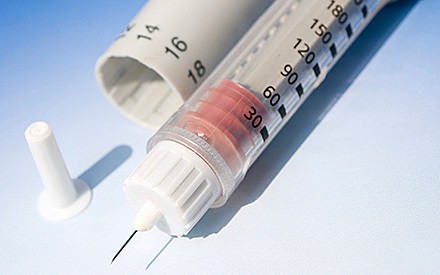Introduction
Researchers have gained new insight into the roles that genetics and diet play in shaping insulin signaling in mice.
A recently published study in eLife, referred to by editors as a vital research piece, offers a comprehensive understanding of insulin signaling in mice. The research highlights the intricate interplay between genetics and dietary factors in shaping insulin signaling, a critical regulator of metabolism. In addition, the findings of this study provide a helpful resource for investigating insulin reactions, which may have consequences for future research on metabolic diseases and diabetes.
Genetic and Environmental Factors in Insulin Resistance
Insulin resistance is a disorder that occurs when insulin fails to increase glucose uptake in target tissues. Insulin resistance is the result of a mix of variables, both hereditary and environmental. These factors include family history and high-calorie diets, and they play a pivotal role in the development of metabolic diseases, such as type 2 diabetes. Despite its significance, the precise mechanistic basis of insulin resistance remains elusive.
According to Julian van Gerwen, the primary author of the study and an undergraduate student at the School of Life and Environmental Sciences at the University of Sydney in Australia, “Insulin resistance is a major precursor of metabolic disease, including type 2 diabetes, but its mechanistic basis remains unresolved.”
Tip: Please fill out this form to determine whether or not you or a friend are eligible for a CGM and, Also learn about CGM Subscription Services
Insulin Signaling and Phosphorylation
In normal circumstances, insulin instructs the body to absorb glucose from the bloodstream through a complex signaling pathway. Phosphorylation is a process that involves the addition of a phosphate group to a protein at a specified place known as a phosphosite. Phosphorylation is necessary for the pathway in question. Insulin signaling is known to control a large number of phosphosites, however, the majority of these sites have not been defined. Additionally, the influence of genetics and diet on the phosphorylation status of cellular proteins, referred to as the phosphoproteome, remains unclear.
Read Guide about Wegovy Dosage Guide: The Best Way For Weight Loss
To address these questions, van Gerwen and his colleagues conducted a study using mice with well-characterized genetic backgrounds. They put these mice on either a regular or a high-fat, high-sugar diet and then analyzed samples of their skeletal muscle, which is the key region where insulin stimulates glucose uptake. The phosphorylation state of hundreds of proteins in each muscle sample was evaluated using mass spectrometry. The analysis not only identified established insulin-regulated phosphosites but also revealed numerous novel sites associated with insulin signaling.
The Effects of Diet and Genetics on Insulin Signaling
To delineate the impact of genetics and diet on insulin signaling, the researchers developed an algorithm. When the mouse strain was fed a regular diet, it was shown that nearly half of all insulin-regulated phosphosites were impacted by the mouse strain. These phosphosites exhibited either a stronger or weaker response to insulin. Every genetic background exhibited a one-of-a-kind insulin signaling fingerprint.
On the other hand, although alterations in insulin signaling were brought about by diet, the majority of these shifts were determined by the genetic backgrounds of the mice. It is interesting to note that particular phosphosites revealed modifications in opposite directions among various strains; this highlights the significant role that heredity plays in the molecular repercussions of consuming a high-fat diet.
Key Phosphosites and Insulin Response
To ascertain whether these phosphorylation changes translated to altered insulin responses, the team measured glucose uptake in the same muscle samples used for phosphoproteome analysis. By correlating insulin-regulated phosphosites with glucose uptake levels, the researchers identified a set of critical phosphosites likely responsible for controlling the insulin response. In a cell-based model, the team demonstrated that modulating a specific protein associated with one of these phosphosites could reverse insulin resistance.
Must Read About: Machine Learning Breakthrough: Analysis Improves Coronary Artery Disease Risk
Future Directions and Complexity in Insulin Signaling
The authors of the study emphasize that the changes in phosphorylation driven by genetics and diet could not be predicted by the existing model of the insulin signaling pathway. This underscores the incomplete nature of our understanding of this pathway. They advocate for further investigations into the underlying biomolecular mechanisms that link these common changes. In addition, in order to bolster the validity of their findings, they advise that future studies should include female mice as well as a wider variety of genetic backgrounds.
In the words of senior author David James, a professor at the School of Life and Environmental Sciences and Faculty of Medicine and Health, University of Sydney, “To truly comprehend We need to adjust to the new level of complexity brought about by the discovery of how diseases emerge from abnormal signaling. Our research serves as a springboard for future investigations that will take on the difficult problem of insulin resistance and diabetes.


